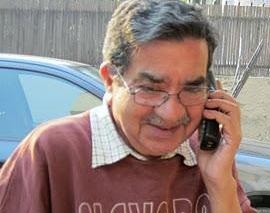
Jatinder Sethi was born in Lyallpur, now Faisalabad, in pre-Independence India. He finished his M.A. (English) from Delhi University in 1956, and went off to London to study Advertising in 1958. He passed his Membership Exam of The Institute of Practitioners in Advertising (M.I.P.A) in1965, and joined Rallis India in Bombay. Later, for over 20 years, he worked for the advertising agency Ogilvy &\; Mather. Now retired, he helps his son in his ad agency in Delhi.
Ed. Note. Mr. Sethi’s article on Delhi in the 1950s is a complement to this article.
_______________________________________
Kaun Jaye Dilli Kee Galiana Chode Kar कौन जाये दिल्ली की गलियां छोड़कर ?
Who wants to leave Delhi?
The old Urdu poet was right then, and it applied to Delhi of my time also - the late 1950s.
Delhi was the hub of cultural and intellectual activities, fired by the late Chacha Nehru, and politically aware Punjabis of Partitioned India. At that time, they gathered at the India Coffee House, Janpath, New Delhi. This was the crowd that produced well-known writers, photographers, journalists and even Prime Minister (Inder Kumar Gujral) of the country.
Delhi of that period had three very well-known and popular annual cultural events.